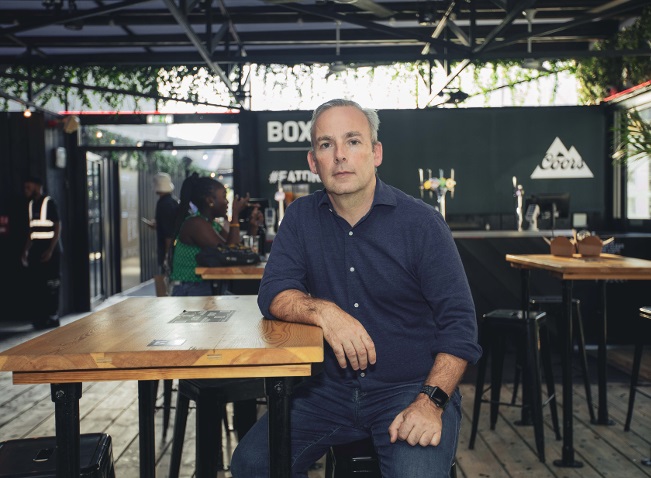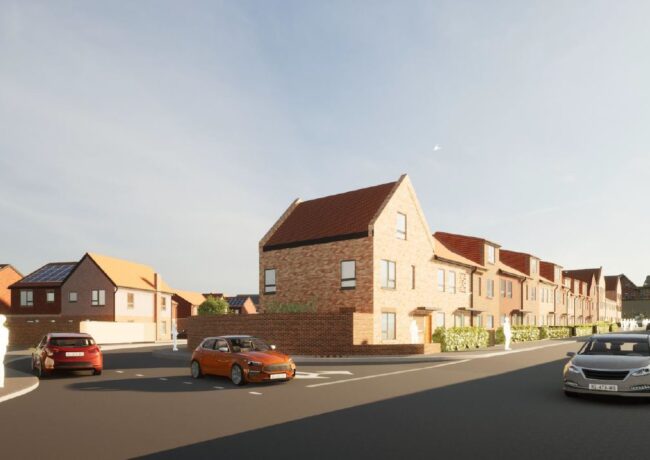The Subplot
The Subplot | Liverpool’s zombie development, shopping centres, life science
THIS WEEK
- Liverpool’s zombies: stalled residential schemes won’t haunt the city much longer
- Elevator pitch: your weekly run down of who and what is going up, and who is heading the other way

BEWARE OF ZOMBIES
Winter nights are the time for zombies to stalk the earth, and so it’s proved in the twilight world of Liverpool’s stalled fractional sales residential schemes. Never very numerous – barely a dozen – but very conspicuous, the stalled schemes have dragged the city down. Could the recent spate of zombie action be the last?
Flesh dropping off them
The New Chinatown residential development at Great George Street – slated at various times for 800 apartments and 200,000 sq ft of commercial floorspace – has been going nowhere for the past three years and now seems to have ground to a complete standstill. A few weeks ago it emerged that the development vehicle, Great George Street Projects Ltd, was subject to a receivership after lenders pulled the plug. Six years after the scheme launched, patience is wearing thin and there are calls for the council to sort this out.
Who you gonna call?
If the council is looking for ghostbusters it should probably call Jason Sam Oakley from Bilston, near Wolverhampton. Control of the project company rests with Great George Street Developments, which in turn rests with A&C Investments Midlands Ltd, which, in turn, is controlled by Oakley. This cluster of businesses took control in 2018, acquiring the site from North Point Global. Google for the full history, including the dropped police investigation.
More flesh
A few weeks earlier, another 2018 site acquisition unwound: an SPV attached to Mount Property Group collapsed midway through delivering Natex, a 574-unit scheme on Norton Street. The £45m scheme fell into administration after the company’s tax-haven lenders called time.
Risen from the dead
The get-rich-quick scheme that inspired many of Liverpool’s stalled developments – the fractional sales model – has been on the city council’s list of problems to root out since 2018. Good work has been done, but more remains. “This casts a shadow across even the good developers, because people start disbelieving everyone,” says Alan Bevan, managing director at City Residential and as close to a zombie-hunter as Liverpool gets. As recently as January the council was working through the recommendations of its Fractional Investment Scrutiny Panel.
Bad vibes
This mess comes with a cost, and not just to the fractional buyers who have ended up carrying losses when schemes collapse. Big name institutional investors have been watching the various police investigations and noting the general air of seediness which surrounds some aspects of the Liverpool residential scene, and decided to steer clear. The options for intervention are few and costly and, frankly, Liverpool City Council is currently in no state to do anything very clever. What investors want to see is a sign that this nightmare will soon be confined to history.
Banish them
That might be happening. The rash of newcomers to the city’s residential scene who piled in 2016-18 have either found success or come unstuck. Covid-19 hasn’t been directly responsible – but it has helped sort the wheat from the chaff. “We’ve probably seen the peak of the stalled schemes’ problem. We won’t see many more, maybe any more. Though perhaps a couple of small schemes look vulnerable,” Bevan told Subplot.
Payback
If we are past the peak, then investors who took a risk in Liverpool will be rewarded. The residential yield gap with Manchester is about 2% (assume Liverpool around 6%, Manchester 4%). With the drag of the stalled schemes gone, the gap will narrow as Liverpool hardens, and Manchester softens. The big potential catch is that sites like New Chinatown need to see confidence-boosting action, and quickly. Time to make some calls to Bilston, maybe.
ELEVATOR PITCH
 Going up or going down? This week’s movers
Going up or going down? This week’s movers
Shopping centres are rocketing as investors spot a market on the turn and life science property is also up, but the government’s levelling up white paper looks like it’s stuck at reception.
 Shopping centres
Shopping centres
Small shopping centres are hot – or so investors are gradually convincing themselves. Valuations have stabilised, and it’s plausible to call the bottom of the market. From now on it will all be up, and the prospect has lured opportunistic new money (and many new faces) into taking a risk on retail. Data from Knight Frank shows that investors will have poured £1.3bn into shopping centres by the end of this month, the highest annual pot since 2017. As much as £650m comes from new entrants, predominantly focusing on smaller affordable lot sizes, ideally with a visible convenience-store element. Current valuations are so firmly on the floor, that a modest rise in values is all the new owners need.
 Science property
Science property
2022 is going to be a bumper year for the life science property sector, so full marks to Daresbury’s 180,000 sq ft Ultraviolet labs development for getting the timing right. Planning permission has now been granted for the latest phase of Sci-Tech Daresbury, a partnership between Langtree, the Science & Technology Facilities Council and Halton Council. It will sit next to Project Violet, the 42,000 sq ft speculative office scheme currently under construction. A lot more money is coming into life science property: a specialist REIT recently raised £350m, while mega-bucks players like Canada’s Oxford Properties and London’s British Land are tooling up. At the moment most of the money is going to the London-Oxford-Cambridge triangle, but 2022 will see more divert to the North West.
 Liverpool offices
Liverpool offices
The chicken-and-egg dilemma that plagues Liverpool’s office market – lack of supply inhibits deals which inhibits supply – could be cracked soon if the 116,000 sq ft Hemisphere office development in the Knowledge Quarter gets the go-ahead. Liverpool City Council’s cabinet is backing an agreement with Sciontec Developments that will pave the way for the office, to be built next to The Spine, and forming the next stage of the Paddington Village innovation district. Developer is Sciontec, the universities-meets-council-meets-Bruntwood-JV. The council has agreed to contribute £21.5m towards the construction of another 90,000 sq ft office.
 Levelling up
Levelling up
You can stop holding your breath because the levelling up white paper isn’t likely to emerge until January. Westminster gossip suggests the delay is largely about money (levelling up won’t be free) and we can guess what comes next: disappointment, particularly if funding imposes limits on improving skills, a key focus for Gove and everybody else. Largely useless local enterprise partnerships are to be abolished, says the rumour. Nobody will mourn them. The big news could be for Lancashire, where local government reorganisation is envisaged. Maybe Preston gets to be a single-tier unitary authority? Would it make much practical regeneration difference if it did? Questions to pose in 2022.
The Subplot is brought to you in association with Cratus and Oppidan Life.






Great George St is another Tomlinson McInnes scheme… Rilley next?
By Jordan
Liverpool just can’t catch a break. Getting an office when no one needs them anymore.
By Anonymous